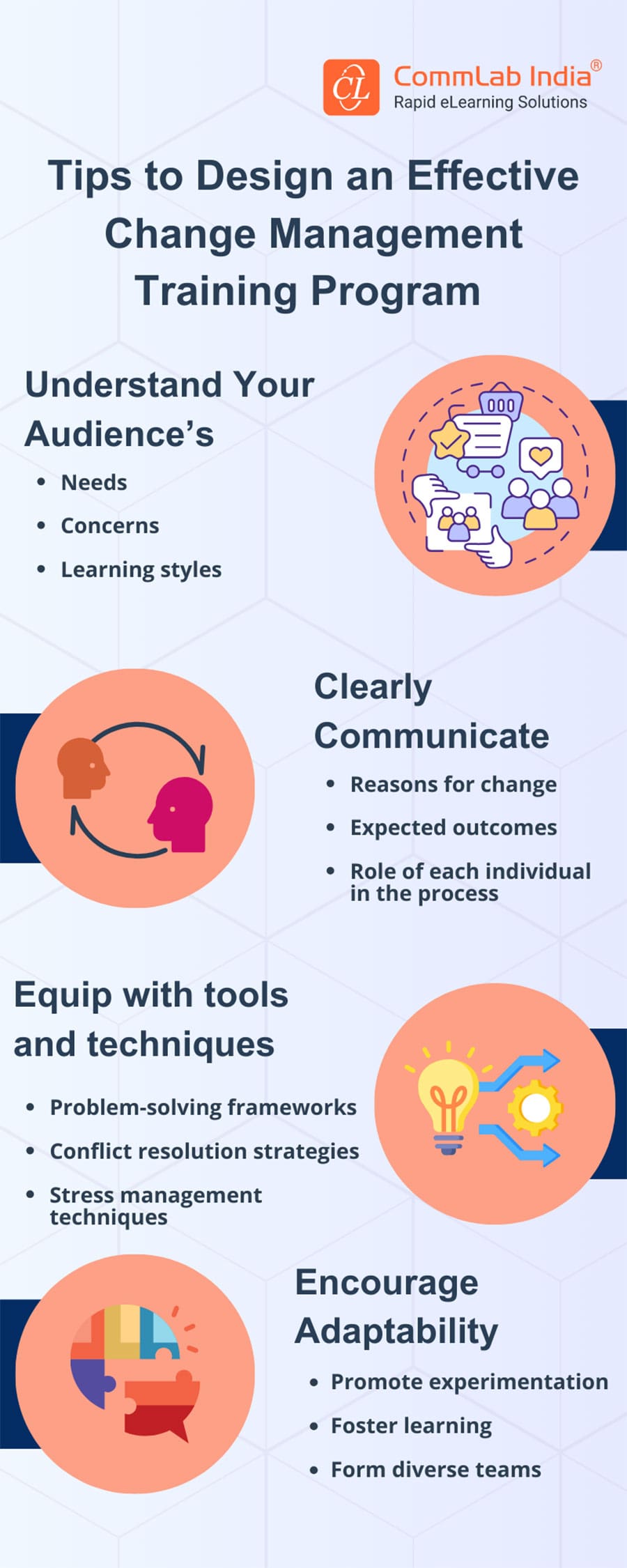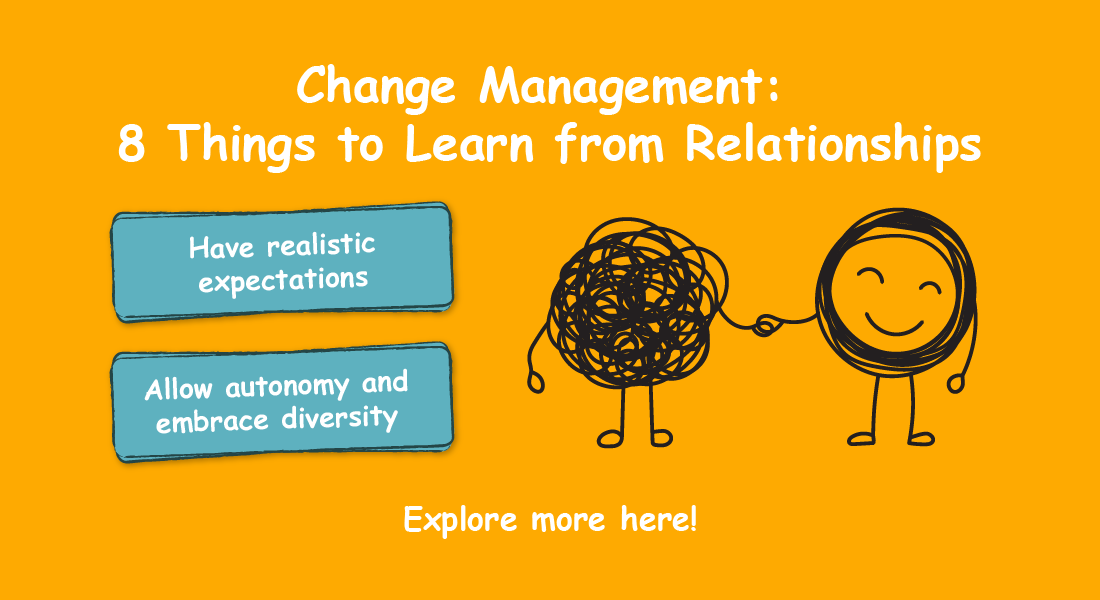How to Design an Engaging Change Management Training Program? [Infographic]
![How to Design an Engaging Change Management Training Program? [Infographic] How to Design an Engaging Change Management Training Program? [Infographic]](https://blog.commlabindia.com/hubfs/blogs/change-management-training-design-tips-info.jpg)
John F. Kennedy once famously remarked, “Change is the law of life, and those who look only to the past or present are certain to miss the future.” Indeed, whether on a personal scale or within the dynamics of organizations, transformation is an inevitable journey fraught with challenges and uncertainties. Yet, it is often the fear of the unknown that fuels our resistance to change. However, amidst this apprehension lies the promise of growth and progress. Here comes change management to help organizations transition from their current realities to the promising horizons of tomorrow.
What’s the Need to Embrace Change?
In today's rapidly evolving business world, organizations that resist change risk stagnation and obsolescence. By embracing change, businesses can foster a culture of innovation that drives growth and competitiveness. Change prompts organizations to challenge the status quo, explore new ideas, and adapt to emerging trends and technologies.
William Pollard once said, "Without change, there is no innovation, creativity, or incentive for improvement. Those who initiate change will have a better opportunity to manage." This quote encapsulates the essence of why embracing change is necessary.
Furthermore, change opens doors to new opportunities for learning and development. It encourages experimentation and risk-taking, leading to breakthroughs and advancements in products, services, and processes.
What is Change Management?
Change management involves guiding employees to welcome and adopt alterations within their work environment. These alterations may encompass shifts in technology, leadership, or strategic direction within the organization. Implementing a change management process led by adept professionals is crucial to mitigate potential adverse effects and ensure a seamless transition.
→ Download Now: Change Management through Gamification [Case Study]
What are the Skills Necessary to Effectively Manage Change ?
1. Communication
Clear and effective communication skills are crucial for conveying the reasons behind the change, addressing concerns, and keeping stakeholders informed throughout the process.
2. Leadership
Strong leadership skills are necessary to inspire confidence, rally support, and guide teams through the transition with vision and direction.
3. Emotional Intelligence
The ability to understand and manage emotions, both one's own and others', is vital for navigating the challenges and resistance that often accompany change.
4. Adaptability
Flexibility and adaptability are essential for responding to unforeseen obstacles and adjusting strategies as needed throughout the change process.
5. Problem-Solving
Strong problem-solving skills enable change managers to identify potential roadblocks, develop solutions, and implement strategies to overcome challenges.
6. Collaboration
Collaboration skills are important for building consensus, fostering teamwork, and engaging stakeholders in the change process.
What is the Importance of Change Management Training to Sail through Change Effectively?
Change management skills are essential for senior executives or designated change managers but also for anyone involved in the change process. Investing in training programs and resources to cultivate these skills among employees is crucial.
Change management training offers the following benefits:
- Prepares individuals to understand the rationale behind the change, their roles, and expected outcomes.
- Equips individuals with the necessary skills to adapt to new processes, technologies, and ways of working.
- Training helps individuals recognize and address resistance to change effectively, minimizing disruptions.
- Provides individuals with communication skills to convey information, address concerns, and maintain transparency.
- Empowers leaders to guide their teams through change with empathy, vision, and resilience.
- Fosters employee buy-in, ownership, and commitment to the change.
- Encourages continuous learning and adaptation for future changes.
How Can You Craft a Winning Change Management Training Program?
Embracing the Change Head-on!
In the face of change, it is natural to feel apprehensive, but it is through embracing change management that we can navigate the complexities of transformation with confidence and purpose. By embracing change management principes, individuals and organizations alike can transcend the confines of the present and chart a course toward a brighter future.
To delve deeper into change management training, our case study offers invaluable insights. It illustrates how we successfully leveraged gamification to facilitate change management for a product packaging major.





![Relationships and Organizational Change Management [Infographic]](https://blog.commlabindia.com/hubfs/Imported_Blog_Media/change-management-organizations-relationship-lessons.jpg)

